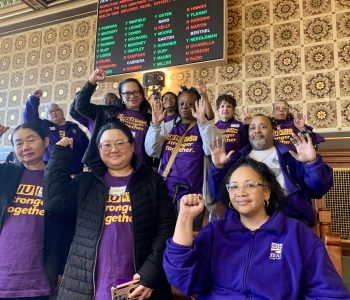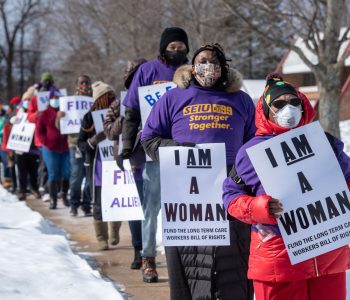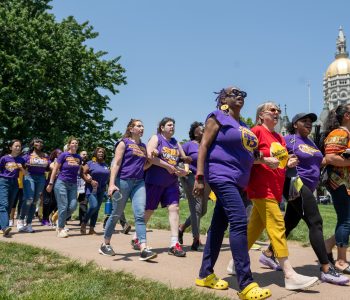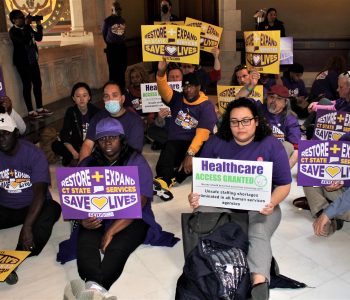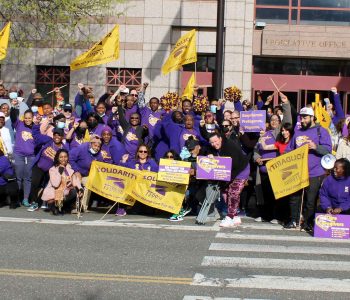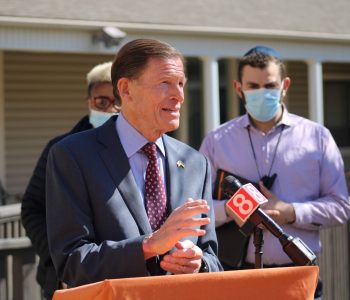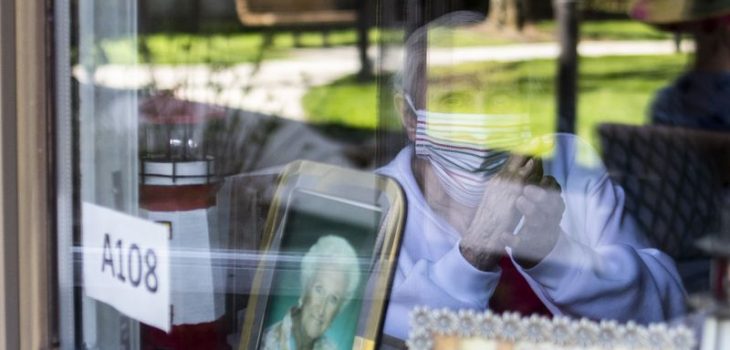 COVID-19
COVID-19
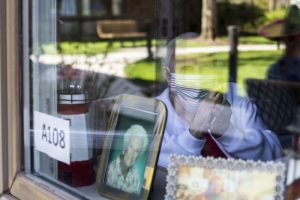
When Tanya Beckford was infected with COVID-19 while working at an assisted-living facility in Newington earlier this year, she told her children her last wishes. She did not know that people could survive the virus.
Months later, she is alive — but ravaged by the physical effects of COVID-19 and the psychological toll of pushing through death, grief and exhaustion to work 80-hour weeks as a certified nursing assistant at the Newington Rapid Recovery Rehab Center. Today, Connecticut health care workers remain woefully unprotected against the ongoing COVID-19 pandemic, she told a joint listening session of the state legislature’s appropriations, public health and human services committees Wednesday.
“I’ve been out of work since April and I’m still not strong enough to get back into the facility,” Beckford said. “And it’s kind of good for me at this point because I’m still very emotional. I had 10 residents at the time and seven of them died before I even got sick.”
Lawmakers convened the listening session to determine whether there are specific legislative solutions for the issues that plagued nursing homes struggling to stem widespread COVID-19 infections this past spring. Such items might not be part of an upcoming special session this fall, they said, but could appear in next year’s regular session.
“It feels like when you are the frontline workers deliberately put in harm’s way, it is normalized worker abuse,” Rep. Anne Hughes, D-Easton, told Beckford. “We cannot normalize desecrating workers that are going into harm’s way without the proper protection, without the proper support and without the proper coverage when they get sick.”
Some lawmakers raised concerns about widespread staff layoffs and reductions in work hours in Connecticut nursing homes, in addition to highlighting the emotional toll on residents not being able to visit family members in nursing homes. A recent executive order signed by Gov. Ned Lamont expanded “compassionate care” visits at nursing homes but stopped short of allowing all indoor visits, which have been prohibited since March.
Denice Panella, a registered nurse at a nursing home in Colchester, asked lawmakers to help increase staffing, saying that she and her coworkers were “burnt out.”
“We need staff, and in order to get staff, people are not wiling to come and get $14 an hour,” she said. “Who wanted to work at nursing homes before this? Nobody. And now you’re going to risk COVID? Nobody’s going to come and work. For those of us who have stayed, we have taken on so much.”
Jesse Martin, vice president of SEIU Healthcare 1199NE, told the joint committees that his union lost 10 members to the virus due to COVID-19 outbreaks in nursing homes — in addition to more than 40 relatives of members. Out of the 70 nursing homes the union represents, 67 had or currently have residents positive for the virus, he said. He called on lawmakers to increase minimum staffing requirements and ensure that workers have access to adequate amounts of personal protective equipment.
Sen. Saud Anwar, D-South Windsor, directed blistering comments about the inadequate protection of nursing home staff at Matthew Barrett, president and CEO the Connecticut Association of Health Care Facilities and the Connecticut Center for Assisted Living.
“The reality is there’s a mega failure collectively,” Anwar said. “There’s some good actors, but overall, there was a significant failure. … I have had the opportunity to hold hands, wearing gloves, with the people who have lost their loved ones who were workers in nursing homes. And if you listen to their stories, it was clearly the lack of support of common sense precautions that were supposed to be there, that needed to be provided.”
Barrett responded that he was grateful to nursing home staff, who worked under “very challenging circumstances.” He argued that infection prevention and control procedures implemented early-on in the pandemic were “wholly ineffective” to prevent the transmission of the virus because the asymptomatic spread of COVID-19 was not fully understood and state and federal governments provided symptom-based guidelines. Additionally, he said, testing capacity was limited and PPE was in short supply.
“If it sounds defensive, and I don’t mean it to be, I’m really proud of the work these operators did in an epic battle against a virus that had a lot of unknowns to it early on,” he said.
Rep. Michelle Cook, D-Torrington, followed up on Anwar’s line of questioning, grilling Barrett on why it took so long for nursing homes to require staff to wear face masks. She argued that nursing home administrations should have taken it upon themselves to mandate mask-wearing, rather than waiting for state or federal guidance.
Barrett said that in hindsight, “you would have seen us masking much earlier,” but added that even the state Department of Public Health did not recommend mask-wearing until April.
Cook countered that facilities should have taken responsibility for instituting safety protocols much earlier: “Quite frankly, if we work in facilities of highly compromised folks, why would we not put facial coverings or masks on our staff all the time, year-round, if we know that there’s flus or colds or streps or pandemics?”
A number of lawmakers questioned whether Connecticut nursing homes would be prepared for a potential resurgence of the virus in the fall and winter months. Administrators said that they were making arrangements for a surge. Barrett noted that facilities have been stockpiling PPE — but raised concerns about the financial strain that facilities face as a result of reduced occupancy, which he called a “grim” reality.


